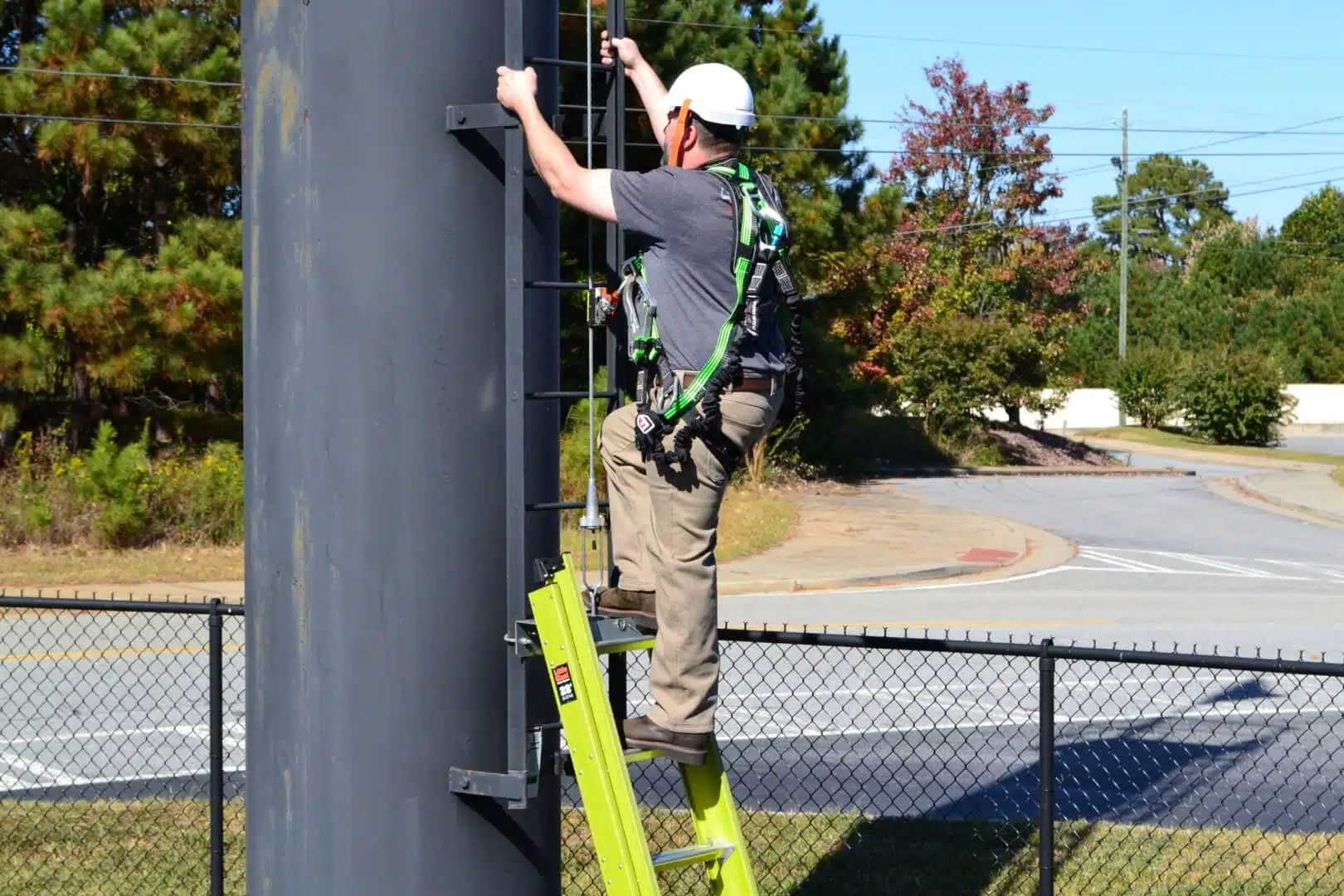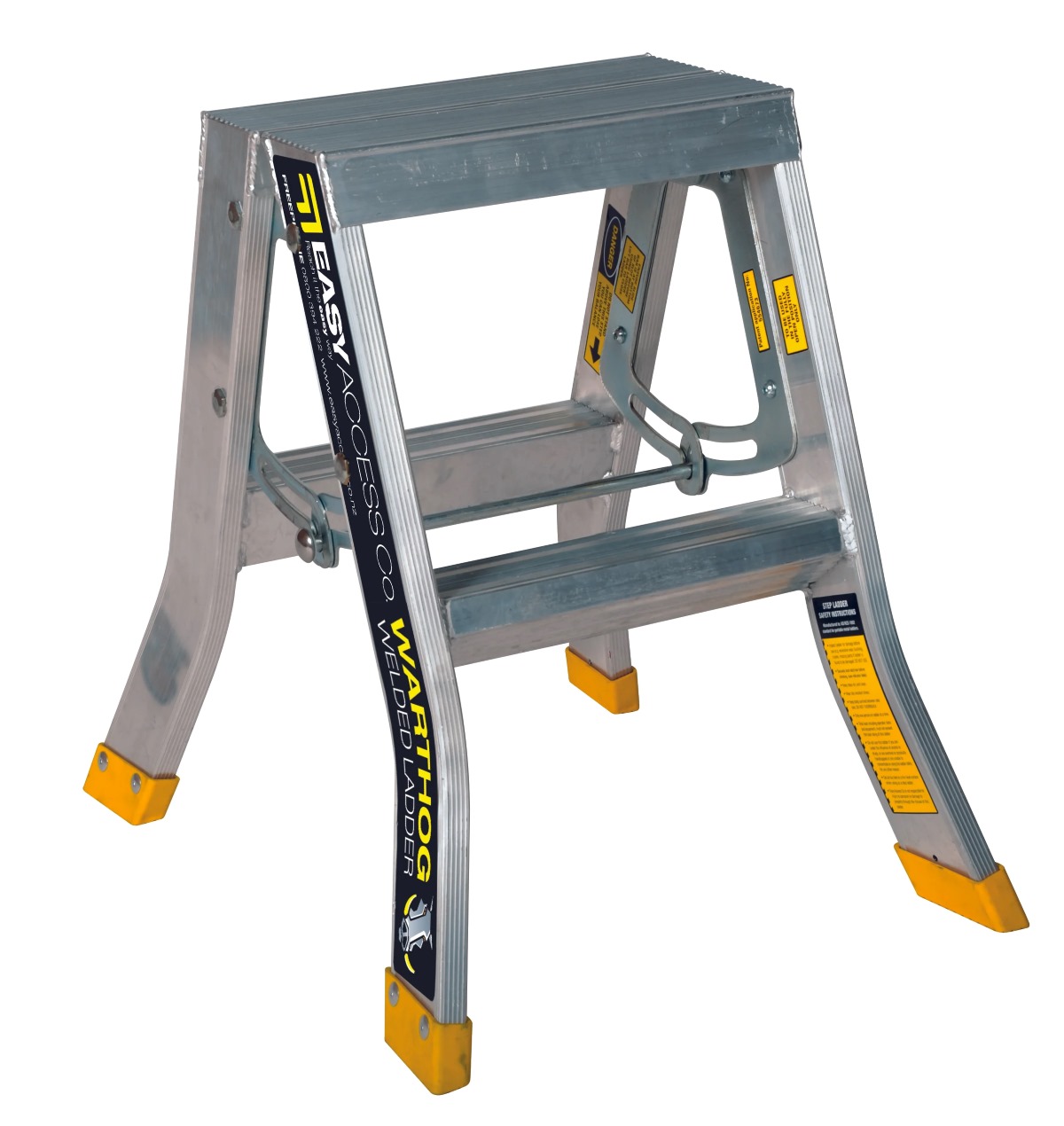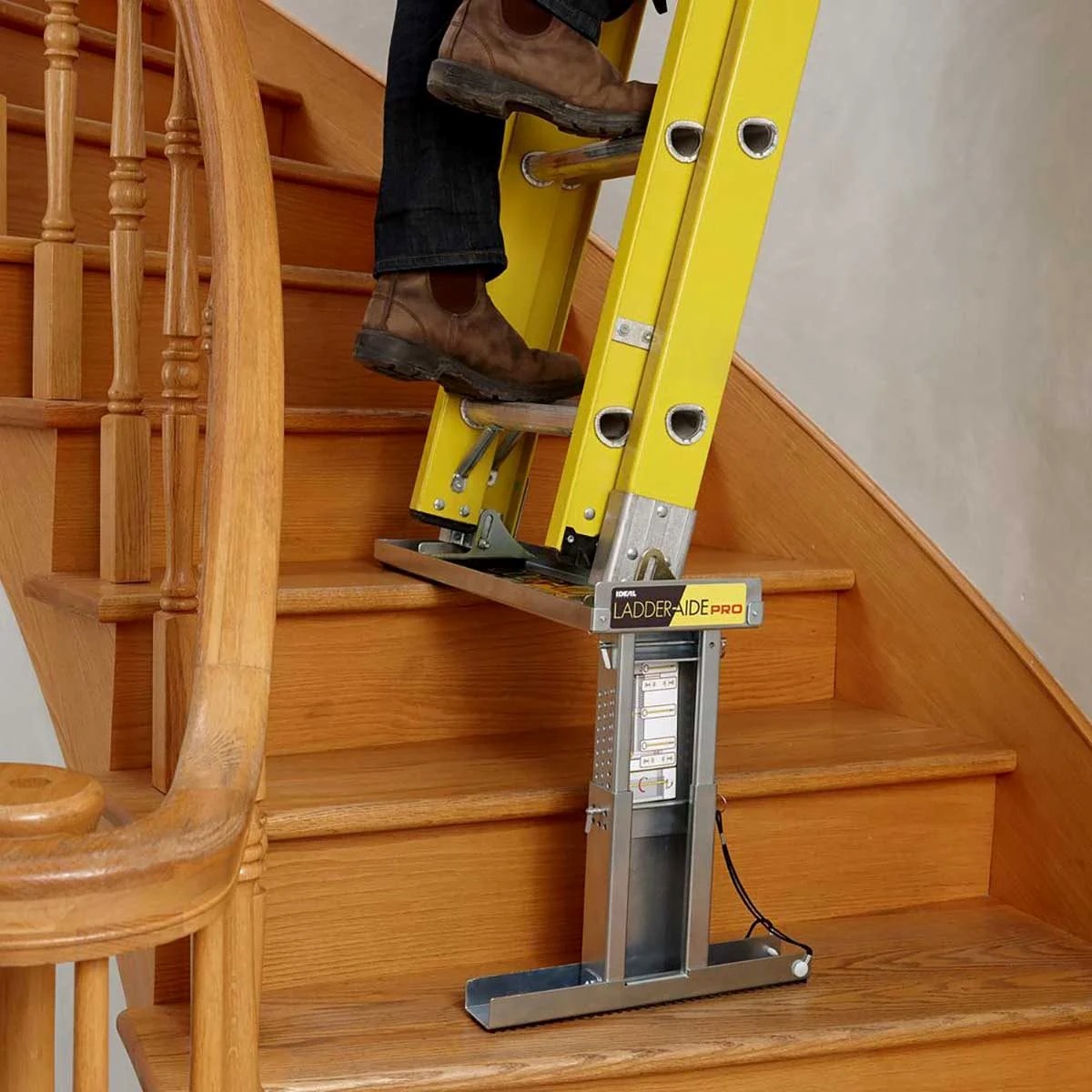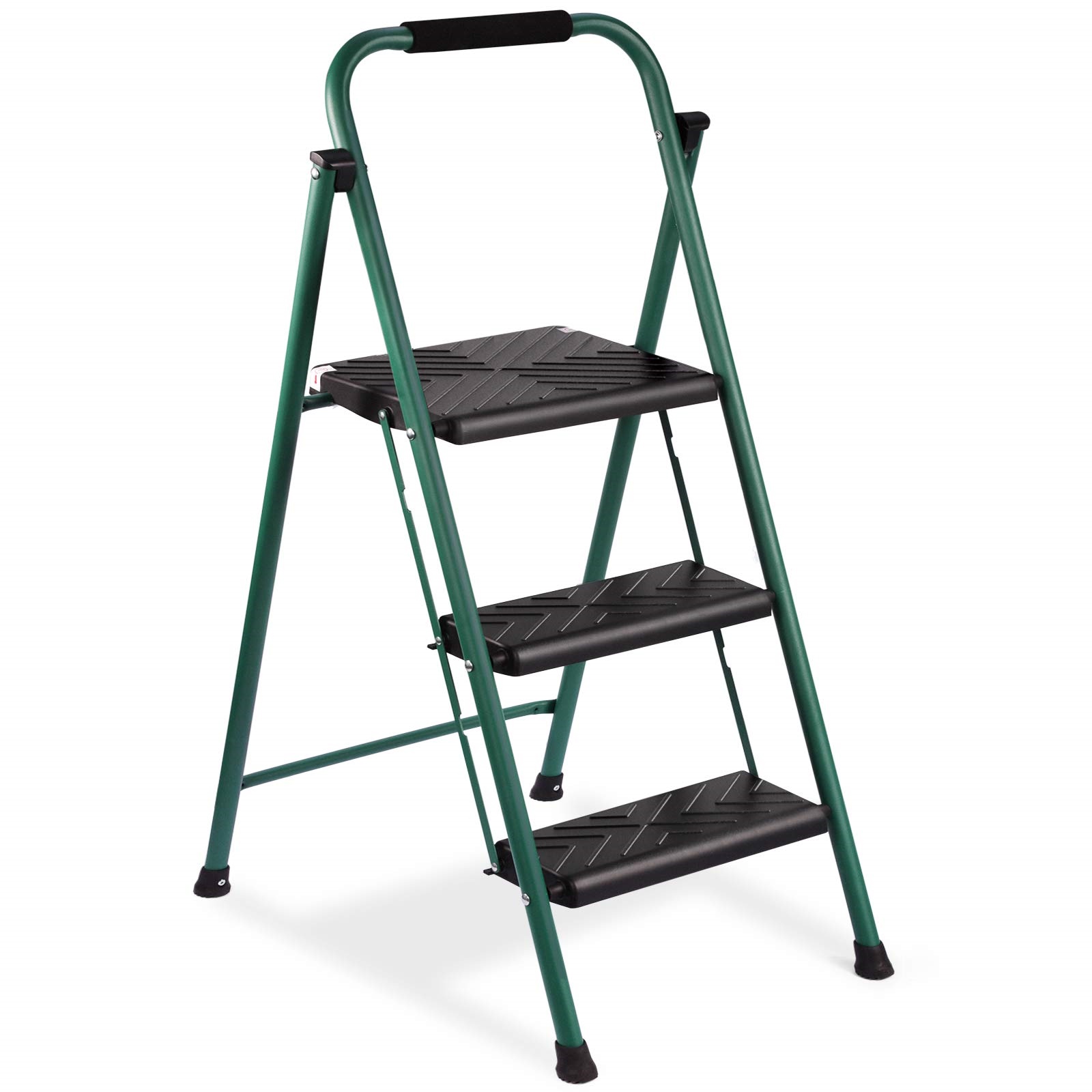Home>Articles>What Ladder Is Best For Working Close To The Ground


Articles
What Ladder Is Best For Working Close To The Ground
Modified: October 20, 2024
Looking for articles on the most appropriate type of ladder when working alone? Find out which ladder is best for working close to the ground and by yourself.
(Many of the links in this article redirect to a specific reviewed product. Your purchase of these products through affiliate links helps to generate commission for Storables.com, at no extra cost. Learn more)
Introduction
When it comes to working alone and close to the ground, selecting the right ladder is crucial for ensuring safety and efficiency. Whether you’re a DIY enthusiast, a painter, or a handyman, having the appropriate ladder will not only make your job easier, but it will also minimize the risk of accidents or injuries.
However, with the wide variety of ladders available in the market, choosing the most suitable one can be a daunting task. Factors such as the type of work, height requirements, weight capacity, and storage space should all be taken into account when making your decision.
In this article, we will explore different types of ladders that are most appropriate for working alone and close to the ground. By understanding the features and benefits of each ladder type, you can make an informed choice that aligns with your specific needs.
Key Takeaways:
- Choose a step ladder for stability and convenience when working alone and close to the ground. Ideal for tasks like painting walls, changing light bulbs, or accessing overhead storage areas.
- Opt for a platform stepladder or podium steps for a larger, more stable working platform. Perfect for tasks that involve prolonged standing or require multiple tools and materials.
Read more: How To Close Attic Ladder
Factors to Consider
Before delving into the specific ladder options, let’s take a moment to consider the important factors that should guide your decision-making process:
- Height Requirements: Assess the maximum height you need to reach in your work. This will help you determine the appropriate ladder size and height reach.
- Weight Capacity: Consider your body weight and the weight of any tools or equipment you may be carrying while on the ladder. Ensure that the ladder you choose can safely support the total weight.
- Stability and Safety Features: Look for ladders with features such as non-slip treads, stabilizing bars, and secure locking mechanisms to ensure stability and reduce the risk of accidents.
- Portability and Storage: If you need to move the ladder frequently or have limited storage space, consider lightweight and compact ladder options that are easy to transport and store.
Now, let’s explore the various ladder options that are ideal for working alone and close to the ground:
Key Takeaways:
- Choose a step ladder for stability and convenience when working alone and close to the ground. Ideal for tasks like painting walls, changing light bulbs, or accessing overhead storage areas.
- Opt for a platform stepladder or podium steps for a larger, more stable working platform. Perfect for tasks that involve prolonged standing or require multiple tools and materials.
Read more: How To Close Attic Ladder
Factors to Consider
When selecting a ladder for working alone and close to the ground, there are several important factors to consider. By taking these factors into account, you can ensure that you choose a ladder that is safe, reliable, and best suited for your specific needs.
1. Height Requirements: One of the first things to consider is the maximum height you need to reach. Different ladder types have varying height capacities, so it’s essential to choose a ladder that can comfortably and safely reach your working area. Measure the height from the ground to the highest point you need to access to determine the appropriate ladder height.
2. Weight Capacity: Another crucial consideration is the weight capacity of the ladder. Take into account your body weight, as well as any tools, equipment, or materials you will be carrying while on the ladder. It’s important to choose a ladder with a weight capacity that exceeds the total weight for optimal safety.
3. Type of Work: Consider the nature of the work you will be doing. If you need both hands free to perform tasks, you may prefer a ladder with a platform or a ladder with a built-in tray or tool holder. On the other hand, if you will be primarily using one hand while on the ladder, a ladder with handrails might provide added stability and support.
4. Stability and Safety Features: Safety should always be a top priority when choosing a ladder. Look for features such as non-slip treads, stabilizing bars, and secure locking mechanisms to ensure stability while working on the ladder. Some ladders also come with additional safety features like anti-tip designs or grip handles for added security.
5. Portability and Storage: If you need to move the ladder frequently or have limited storage space, consider the portability and storage options of the ladder. Look for lightweight and compact ladder models that are easy to carry and store. Ladders with foldable designs or telescoping features can be particularly convenient in terms of portability and storage.
6. Durability and Materials: The durability of the ladder is also an important factor to consider. Choose a ladder made from high-quality materials that are built to withstand regular use and provide long-lasting performance. Ladders constructed from aluminum or fiberglass are popular choices due to their lightweight yet sturdy nature.
By taking these factors into consideration, you can narrow down your choices and select a ladder that meets your specific requirements. Now let’s explore the different types of ladders that are most appropriate for working alone and close to the ground.
Step Ladders
Step ladders are a popular choice for individuals who work alone and need to reach moderate heights while staying close to the ground. They are versatile, stable, and offer a wide, stable platform for performing tasks.
One of the key features of step ladders is their self-supporting design. They have a hinged structure that allows them to stand freely without needing support from a wall or any other surface. This makes step ladders ideal for tasks that require mobility or when working in open spaces where there is no wall or structure to lean against.
Step ladders typically come in a range of sizes and heights, allowing you to choose the one that suits your needs. They have steps on one side and a platform or a tray on top, providing a secure and stable working area. This design allows you to easily move up and down the ladder while conveniently placing tools or materials on the platform or tray.
When selecting a step ladder, consider the desired height reach, weight capacity, and any additional features that may be helpful for your specific tasks. Look for step ladders with non-slip steps and a sturdy construction to ensure stability while working.
Step ladders are particularly suitable for tasks such as painting walls, changing light bulbs, or accessing overhead storage areas. They are also commonly used in kitchens or warehouses where easy access to shelves or cabinets is required. Additionally, step ladders are a great option for homeowners who perform DIY projects or maintenance tasks around the house.
Overall, step ladders are a reliable and convenient choice for those who work alone and need to reach moderate heights while staying close to the ground. They offer stability, mobility, and a secure platform to carry out various tasks. Assess your specific requirements to determine the appropriate height and features needed for the tasks at hand.
When working alone and close to the ground, a step ladder would be the most appropriate type of ladder. It provides a stable platform and is easy to set up and move. Always ensure the ladder is on a level surface and follow safety guidelines.
Platform Stepladders
For those who require a larger and more stable working platform than traditional step ladders, platform stepladders are an excellent choice. These ladders provide a wider and more spacious platform, making them ideal for tasks that involve prolonged standing or require multiple tools and materials.
Platform stepladders feature a similar design to step ladders, with a self-supporting hinged structure and steps on one side. However, unlike regular step ladders, platform stepladders have a larger platform that extends across the top, offering a secure and stable area to work on. This platform is typically made of non-slip material for added safety.
The wider platform of platform stepladders provides several advantages. It allows you to maintain balance and stability while working, reducing the risk of accidents or falls. Additionally, the larger platform provides enough space to accommodate tools, equipment, and materials, eliminating the need for constant climbing up and down the ladder.
Platform stepladders are commonly used in industries such as construction, maintenance, and painting, where workers need a stable and spacious platform to perform their tasks. They are also favored by professionals in industries like electrical or HVAC, as they provide a sturdy base for working with tools and components at different heights.
When choosing a platform stepladder, consider the height reach, weight capacity, and the platform size that suits your needs. Look for platforms that are wide enough to comfortably stand on while allowing easy access to tools and materials.
Platform stepladders are an excellent choice for those who work alone and require a secure and spacious platform to complete their tasks. They provide stability, convenience, and efficient working space, making them an essential tool for many professionals and DIY enthusiasts.
Whether you need to perform maintenance tasks, paint high ceilings, or work on electrical installations, a platform stepladder can greatly enhance your productivity and safety. Choose the appropriate size and weight capacity that aligns with your specific requirements and enjoy the benefits of a stable and versatile working platform.
Read more: What Is The Working Length Of A Ladder
Podium Steps
Podium steps, also known as podium ladders or podium platforms, are a specialized type of ladder designed for working at lower heights while providing a comfortable and secure working platform. They are particularly well-suited for tasks that require extended periods of standing or working at a fixed height.
Unlike traditional step ladders or platform stepladders, podium steps have a larger and more stable platform that allows users to stand on both feet comfortably. The platform is usually wider and deeper, providing ample space for tools, equipment, and materials.
One of the key features of podium steps is their adjustable working height. They typically have multiple height settings that can be easily adjusted to meet different work requirements. This flexibility allows users to work at a comfortable and ergonomic height, reducing the strain on the body and increasing productivity.
Podium steps are commonly used in various industries, including construction, warehousing, painting, and retail. They are especially popular in tasks such as stock picking, inventory management, and display setup. The spacious platform and adjustable working height make podium steps a desirable choice for these applications.
When selecting podium steps, consider the working height range, weight capacity, and any additional safety features. Look for podium steps with non-slip platform surfaces, guardrails or handrails for added stability, and lockable wheels for easy maneuverability.
Podium steps offer the advantages of a stable platform combined with the flexibility of adjustable height settings. They provide a safe and comfortable working space for prolonged tasks, minimizing the risk of fatigue or accidents. Whether you need to stock shelves, assemble products, or carry out maintenance work, podium steps are an excellent choice for working alone and close to the ground.
Overall, podium steps are a valuable addition to any workplace or task that requires extended periods of standing or working at a specific height. Their sturdy platform, adjustable height, and safety features make them a reliable and convenient solution for professionals and DIY enthusiasts alike.
Multi-Purpose Ladders
When it comes to versatility and adaptability, multi-purpose ladders are a top choice for those who work alone and need a ladder that can handle various tasks. These ladders are designed to transform and adjust into different configurations, allowing you to use them as step ladders, extension ladders, or even as scaffolding platforms.
One of the key advantages of multi-purpose ladders is their ability to transform into different ladder types. They typically have hinges or locking mechanisms that allow you to adjust the ladder’s shape and length to suit different working heights or requirements. This versatility eliminates the need to invest in multiple ladders, saving both space and money.
In their step ladder configuration, multi-purpose ladders function similarly to traditional step ladders, providing a stable and secure platform to work on. The steps are located on one side, while the other side may have a platform or tray for tool placement. This configuration is perfect for tasks that require a stable base and easy access to tools.
In their extension ladder configuration, multi-purpose ladders can be extended to reach greater heights. The ladder can be locked into place at different stages of extension, allowing you to adjust the overall height to suit your needs. This flexibility is ideal for tasks such as painting high ceilings or accessing elevated areas that cannot be reached with a regular step ladder.
Some multi-purpose ladders also have the ability to function as scaffolding platforms. By using additional components or attachments, the ladder can be transformed into a stable platform that allows you to work at a fixed height for prolonged periods. This configuration is especially useful for tasks that require constant standing or working at a specific elevation.
When selecting a multi-purpose ladder, pay attention to the ladder’s weight capacity, stability, and ease of transformation. Look for ladders with durable construction, non-slip steps, and secure locking mechanisms. Additionally, consider the ladder’s size and weight, as this will affect its portability and storage requirements.
Multi-purpose ladders are an excellent choice for those who work alone and require a versatile ladder that can adapt to different tasks and heights. Whether you need a step ladder, an extension ladder, or a scaffolding platform, a multi-purpose ladder offers the convenience and flexibility necessary to get the job done efficiently and safely.
By investing in a high-quality multi-purpose ladder, you can meet a wide range of work requirements without the need for multiple ladders, making it a cost-effective and space-saving solution for any professional or DIY enthusiast.
Conclusion
Choosing the appropriate ladder when working alone and close to the ground is essential for ensuring both safety and efficiency. Factors such as height requirements, weight capacity, stability, and portability should all be considered before making your decision.
Step ladders are a popular choice, providing stability and a secure platform for tasks that don’t require extensive reach. They are ideal for painting walls, changing light bulbs, or accessing overhead storage areas.
For those who need a larger and more spacious working platform, platform stepladders offer a wider area for performing tasks. They are often used in industries such as construction and painting where stability and a comfortable work surface are crucial.
Podium steps provide an adjustable working height and a wider platform, allowing workers to stand comfortably for extended periods. They are commonly used in situations that involve frequent stock picking, inventory management, and displays setups.
Multi-purpose ladders are highly versatile and adaptable, being able to transform into step ladders, extension ladders, or even scaffolding platforms. They are an excellent investment for those who require a ladder that can handle various tasks and working heights.
In conclusion, when selecting a ladder for working alone and close to the ground, consider your specific needs and tasks. Assess the height requirements, weight capacity, stability features, and portability options of different ladder types. By doing so, you can choose a ladder that provides the necessary safety, convenience, and efficiency for your work.
Remember, safety should always be the top priority. Ensure that the ladder you choose is suitable for the task at hand, inspect it regularly for any damage or wear, and follow all safety guidelines and precautions when using the ladder.
By making an informed decision and using the ladder correctly, you can work confidently and effectively, knowing that you have selected the most appropriate ladder for your specific needs.
Frequently Asked Questions about What Ladder Is Best For Working Close To The Ground
Was this page helpful?
At Storables.com, we guarantee accurate and reliable information. Our content, validated by Expert Board Contributors, is crafted following stringent Editorial Policies. We're committed to providing you with well-researched, expert-backed insights for all your informational needs.















0 thoughts on “What Ladder Is Best For Working Close To The Ground”